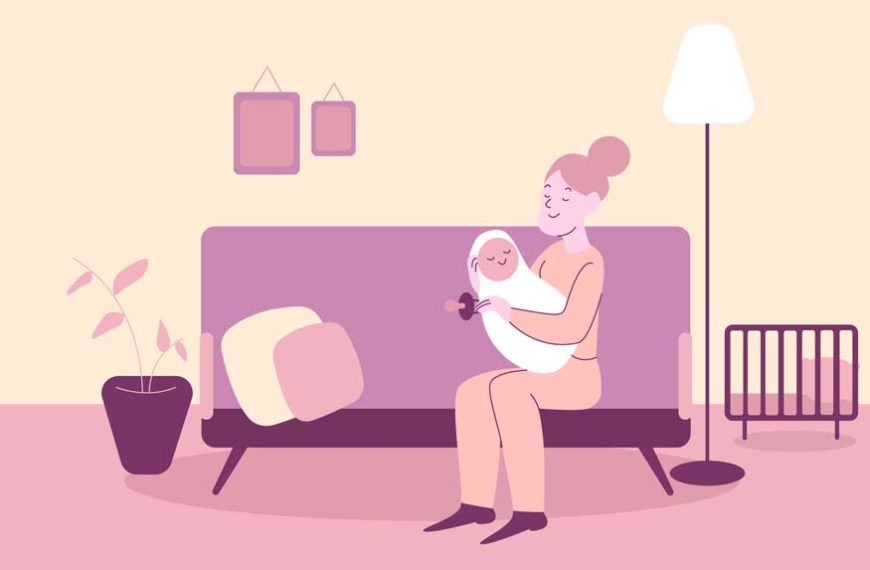Welcoming a newborn into a family is a joyful and rewarding experience. With a newborn, the family experiences several moments of wonder and tenderness. The baby fills the lives of those around them with glee. When the baby is in discomfort and cries, and is too small and young to communicate, the parents or caregivers are left wondering how to make the baby feel better. Amidst the myriad of responsibilities that arrive with having a newborn at home, one of the crucial and often overlooked aspects is burping a baby. Burping a newborn is a delicately important topic for caregivers. While it sounds like a simple act that could be missed while taking care of a baby, it actually has tremendous importance in ensuring the baby’s comfort and wellbeing. The art of burping a baby is a skill that parents, caregivers, or even seasoned siblings can master. It offers both the child and the caretaker relief from discomfort.
Firstly, one of the tips for burping a newborn lies in the understanding that burping a newborn goes beyond the mere basics of mealtime. Gas buildup during feeding can cause discomfort and also contribute to colic or reflux in infants. Hence, mastering the frequency, newborn burping techniques, and burping positions becomes essential knowledge for anyone caring for and helping in burping a newborn. Each baby is unique in their own ways. The art on how to burp a baby requires a lot of patience, gentle handling, and a willingness to experiment with various methods to find out what is best for each baby’s unique needs.
In this article, we will look at how to burp a baby, newborn burping techniques, and burping positions. These tips will assist in facilitating a successful burp. By understanding and mastering these elements, caregivers can ensure a more comfortable and contented experience for the little ones.
Frequency of Burping
The frequency of burping a baby largely depends on the feeding methods, their age, and their individual needs. For burping a newborn, the frequency may have to be more during feedings because of their tendency to gulp air while they are breastfed or bottle-fed. Generally, the following tips are recommended:
- During Bottle-Feeding:
- During Breastfeeding:
- After Feeding:
Pause periodically while bottle-feeding to burp your baby. A good rule of thumb is to burp them every 60-90 millilitres of providing formula.
For breastfeeding infants, it is advisable to burp them when switching breasts or after every 5-10 minutes during longer feeding sessions.
Always burp your baby after they have finished feeding to ensure that any trapped air is released, which will reduce the chances of discomfort later.
As babies grow older, they become more efficient at feeding and swallowing. They might thus require less burping. However, it is good to monitor their cues and observe signs of discomfort to ascertain when burping is necessary regardless of their age.
Infant Burping Techniques
Mastering different burping techniques can greatly help in releasing trapped air from the baby’s stomach. Here are three commonly used methods:
- Over-the-Shoulder:
- Sitting on Lap:
- Face-Down on Lap:
Place the baby over your shoulder. Support their bottom with one hand and gently pat or rub their back with the other hand. Ensure that the baby’s head is adequately supported. The placement of the head should also be a little higher than the stomach to ensure the release of trapped air.
Sit the baby on your lap. Support their chest and chin with one hand while you use the other hand to pat or rub their back. Make sure that the baby’s chin is not pressed against their chest in order to avoid any discomfort.
If you have ever wondered how to burp a sleeping baby, this is the technique that can be used. Lay your baby face-down across your lap. Their head should be positioned slightly higher than their chest. Support their chin and chest with one hand, and rub or pat their back gently with the other hand.
Infant Burping Positions
The choice of position during burping a baby is essential because it determines how effectively the trapped air flows out of the baby’s stomach. While the three techniques mentioned earlier provide variations in positions, the following are additional positions that might work well for your baby:
- Upright Position:
- Face-Down Across Your Arm:
- Seated Support:
Hold your baby in an upright position against your chest with their chin resting on your shoulder. This position utilises gravity to move the air up and out of the baby.
This is another tip on how to burp a sleeping baby. Lay your baby across your forearm. Support their chest and head with your hand while their stomach rests on your arm. Gently pat or rub their back to encourage burping.
Sit your baby in a semi-upright position on your lap while providing support for their chest and chin. This position can be especially useful for babies who have started to sit with assistance.
Tips for Successful Burping
Apart from mastering infant burping techniques and positions, listed below are some additional tips to ensure successful burping sessions of the baby.
- Be Patient:
- Avoid Overfeeding:
- Beware of Spit-Up:
- Maintain a Calm Environment:
- Observe Cues:
It might take some time for the baby to burp, so please try to be patient to allow the release of trapped air.
Pay attention to your baby’s cues of fullness in order to prevent excessive air intake.
Burping may sometimes trigger spit-up in a baby. Keep a cloth handy to manage any small spills or messes.
Create a calm and soothing environment during a burping session to help relax your baby.
Watch for signs of discomfort such as squirming, fussiness, or pulling away during feeding which might cue an incoming burp.
Mastering the art of burping is an essential aspect of caregiving to a baby. It contributes to their comfort and wellbeing. Understanding the frequency, infant burping techniques as well as positions for effective burping allows you to provide the best care of your little one. Every baby is unique, therefore pay close attention to their cues and preferences during burping.
For more information, visit EuroKids, or visit a center nearest to you.















